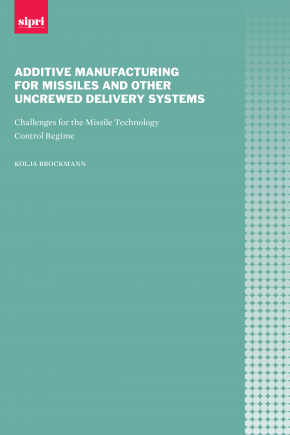Additive Manufacturing for Missiles and Other Uncrewed Delivery Systems: Challenges for the Missile Technology Control Regime
Additive manufacturing (AM) has become an attractive production technology for the aerospace sector, particularly in the area of missiles, space launch vehicles and uncrewed aerial vehicles (UAVs). Modern AM techniques—often referred to as 3D printing—create objects from feedstock materials such as metallic powders by building them up from the first to the last layer in an iterative process of depositing and fusing layers of material. AM is being used to produce a growing range of components for missiles and UAVs.
AM has been recognized to pose a growing proliferation threat and a challenge to existing export controls. The Missile Technology Control Regime (MTCR) has been discussing AM since at least 2013 and seeks to update and harmonize the export controls of the participating states to mitigate the risks posed by AM and ensure the effectiveness of export controls. The export controls prescribed by the MTCR and some of the other regimes already create controls on AM. However, many of these controls are based on overlaps rather than control list items that cover AM by design and may not ensure adequate coverage.
This report provides a short introduction to modern AM techniques and describes a range of specific applications of AM in missiles and other delivery systems. It discusses the proliferation risks posed by AM and the engineering and organizational considerations that have to be weighed against the technical capabilities of AM. It analyses the application of export controls to AM, primarily under the MTCR, by discussing controls on AM production equipment; feedstock materials; transfers of technology and technical assistance; and catch-all controls. The report concludes by outlining key measures through which the MTCR could strengthen its efforts to address AM and the proliferation risks and challenges to export controls it poses.
1. Introduction
2. Additive manufacturing in the aerospace sector
3. The proliferation risks of additive manufacturing and challenges to export controls
4. Applying MTCR export controls to additive manufacturing
5. Strengthening the MTCR’s efforts to address proliferation risks posed by additive manufacturing

